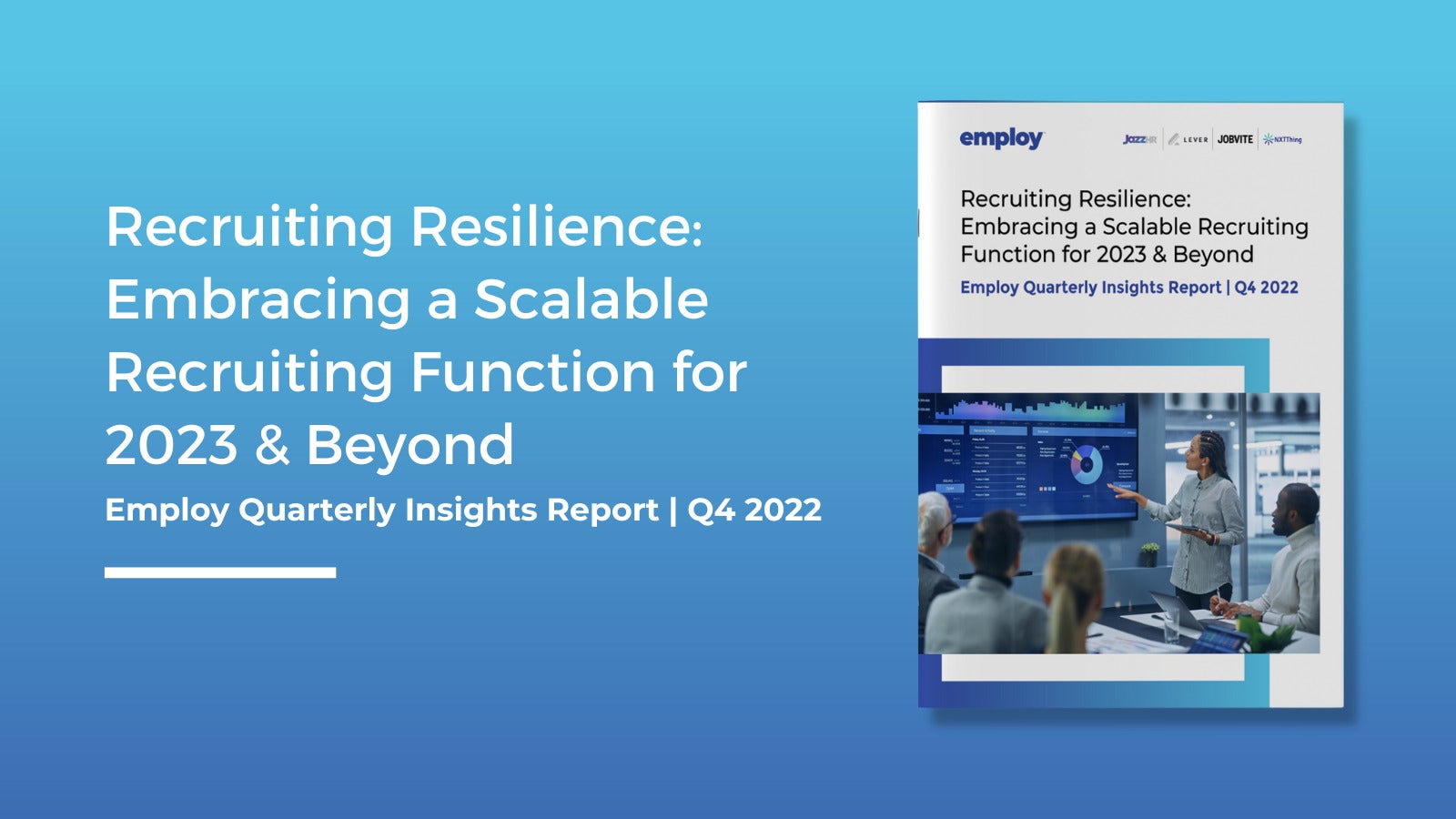For companies of all sizes, navigating the current hiring environment requires nothing less than resilience, determination, and adaptability. Businesses have never faced a more challenging labor market, with historically low unemployment, record-level turnover, job openings above 10 million, and monthly job growth averaging more than 400,000 new hires across 2022.
Yet uncertainty with inflation, drastic interest rate increases, high-profile drops in company valuations, and massive rounds of layoffs dominating headlines have many companies looking to reduce operating costs and tighten spending as they move into 2023.
New Insights and Recruiting Data from Employ
The labor market is seeing a pullback relative to early 2022 historical highs. Employ data shows new job listings per month are decreasing across organizations of every size, while the number of average applications submitted per job is increasing. And while 77% of organizations have not reduced hiring plans or implemented hiring freezes in 2022, 51% of HR decision makers are worried that layoffs may hit their organization.
The unpredictability resulting from these conditions makes it difficult for employers to know how they should respond in this difficult talent landscape. From SMBs to large enterprises, companies of every size and recruiting complexity must stay the course and remain resilient as they plan for 2023 and beyond.
Navigating the paradox of both a softening hiring environment and a historically tight labor market makes it difficult for companies to prepare for the coming year. The Q4 Employ Quarterly Insights Report “Recruiting Resilience: Embracing a Scalable Recruiting Function for 2023 & Beyond” explores how employers can remain resilient as they prepare for 2023. This new report features the latest proprietary and market data, offering insights and actionable takeaways to increase adaptability and scalability in the difficult talent landscape.
View the entire collection of data and insights by downloading the Q4 Employ Quarterly Insights Report.
The Employ Quarterly Insights Report provides unique insights and in-depth analysis on hiring trends compiled from employer and job seeker activity across Employ’s 18,000 customers and findings from a survey of more than 1,200 HR decision makers conducted by Zogby Analytics in November 2022. The report offers a detailed look at the current state of recruiting and examines how companies should optimize recruiting efforts during one of the most difficult and demanding environments in history.
A Continued Demand for Hiring
Despite talks of a recession and worries about potential layoffs, most companies have not slowed their hiring efforts. According to Employ data, 88% of HR decision makers believe hiring in 2023 will be more or as difficult as 2022. Many organizations are actually planning on ramping up their hiring in the next year. An astounding 60% of surveyed HR decision makers say that their company is actively planning on making more hires in 2023, with only 8% of organizations saying they anticipate decreasing their hiring efforts in that time.
Recruiter Priorities for 2023
As the new year approaches, organizations are planning recruiting activities for the coming year. Data from the Q4 Employ Quarterly Insights Report shows that 61% of HR leaders are focusing their efforts on enhancing the quality of candidates and applicants they recruit. Organizations are not shying away from the tough fight in the labor market; instead, they’re doubling down to find the best talent.
Aside from the quality of candidates, HR leaders are also rethinking the tools they use to find and engage with candidates. In 2023, 59% of surveyed organizations plan to increase their spending on applicant tracking systems (ATS) to increase greater efficiencies in their hiring process. This is a significant 17-point increase since June 2022. Additionally, 50% of companies have active plans to increase their investment in candidate relationship management (CRM) systems. In 2023, recruiters will leverage these advanced tools to deliver an excellent candidate experience built to engage, hire, and retain the most skilled labor in the market.
Get the Full Q4 Employ Quarterly Insights Report
The insights available in this article are only a starting point. For more data, key takeaways, and actionable insights, download the full report here.




